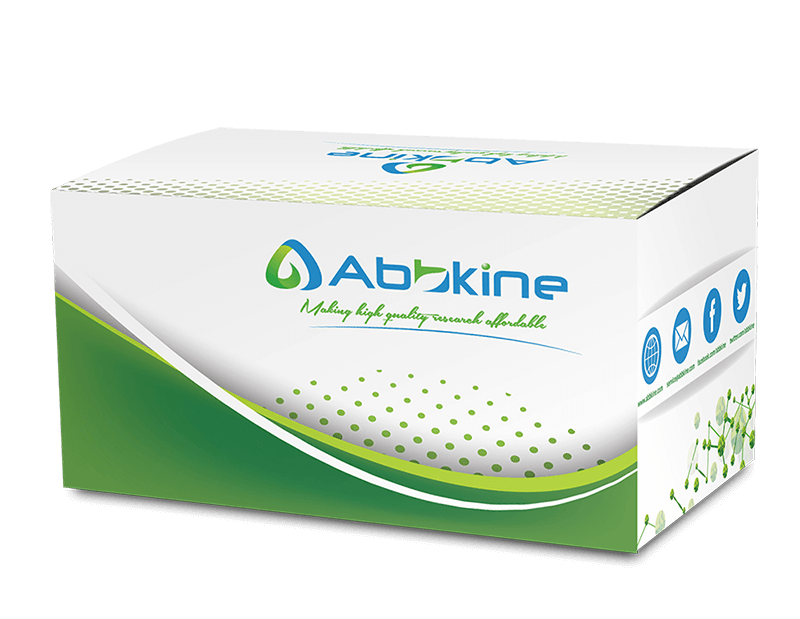

分享产品
Myc标签小鼠单克隆抗体(2D5),磁珠偶联
Magnetic Beads Conjugated Anti-Myc Tag Mouse Monoclonal Antibody (2D5)
产品特点:
选择规格
买2送1活动进行中!购买任意2个规格产品,免费赠送100μL装一支。
活动截止时间:2024年1月31日


买2送1活动进行中!购买任意2个规格产品,免费赠送100μL装一支。
活动截止时间:2024年1月31日
亚科因生物研发的Myc标签小鼠单克隆抗体(2D5),磁珠偶联(Magnetic Beads Conjugated Anti-Myc Tag Mouse Monoclonal Antibody (2D5))是一款专为免疫沉淀(IP)设计的核心工具。该抗体以高亲和力磁珠为载体,可直接从哺乳动物或细菌裂解液中高效捕获带Myc标签的重组蛋白,简化实验流程并提升富集纯度。
Myc tag是一段源自c-myc基因产物的多肽标签,通过重组DNA技术可融合至目标蛋白的N端或C端。由于其体积小、免疫原性低,Myc标签常被用于外源蛋白的表达示踪与功能研究。本抗体(克隆号2D5)为小鼠IgG1亚型单克隆抗体,经合成多肽免疫原亲和层析纯化后,与磁珠共价偶联。当样本通过磁场时,磁珠-抗体-抗原复合物可被快速分离,实现Myc标签蛋白的特异性富集,同时兼容下游WB、质谱或功能分析。
• 蛋白互作研究:IP-MS鉴定Myc标签诱饵蛋白的相互作用网络
• 重组蛋白纯化:一步法富集细菌或哺乳动物细胞中过表达的Myc融合蛋白
• 功能验证:结合WB/ELISA确认标签蛋白表达定位与修饰状态
• 药物筛选:高通量筛选影响Myc标签蛋白稳定性的化合物

| 中文名称 | Myc标签小鼠单克隆抗体(2D5),磁珠偶联 |
| 英文名称 | Magnetic Beads Conjugated Anti-Myc Tag Mouse Monoclonal Antibody (2D5) |
| 产品货号 | ABT2064 |
| 免疫原 | 合成多肽 |
| 宿主 | 小鼠 |
| 反应性 | 哺乳动物#细菌 |
| 标签 | Myc |
| 检测类型 | IP |
| 克隆类型 | 单克隆 |
| 亚型 | 小鼠IgG1 |
| 纯化工艺 | 通过使用特异性免疫原的亲和层析,从小鼠腹水中纯化抗体。 |
| 偶联物 | 磁珠 |
| 产品形式 | 液体形式 |
| 储存缓冲液 | PBS缓冲液(pH 7.4),含有0.02%叠氮化钠(防腐剂)。 |
| 保存建议 | 从发货之日起,4°C可稳定保存一年。避免反复冻融或者离心。 |
| 运输条件 | 冰袋运输(蓝冰) |
| 警告 | 本文列出的产品仅供研究使用,不适用于人类或临床诊断。我们产品所推荐应用,不是建议使用我们的产品去违反任何专利或许可证。对于使用本产品可能发生的专利侵权或其他违规行为,我们不承担任何责任。 |
Anti-Myc Tag Magnetic Beads are prepared by covalently coupling Anti-Myc Tag Mouse Monoclonal Antibody to crosslinked Magnetic Beads, useful for detection and capture of fusion proteins containing a Myc peptide sequence by commonly used immunoprecipitation procedures. The coupling technique is optimized to give a high binding capacity for Myc-Tag protein.
Elution Buffer: 0.1 M Glycine-HCl pH 3.0.
Neutralization Buffer: 1 M Tris-HCl, pH 8.5.
Note: Per 500 μL of protein sample add 20 μL Magnetic Beads. Perform the following procedures, according to add 20 μL Magnetic Beads.
Note: a) For a few samples, due to differences in target proteins, the binding of Myc-Tag and Anti-Myc antibody is very strong, and the effect of Acid elution and Competitive elution of peptide may be poor. Therefore, SDS-PAGE Loading Buffer denaturation elution method is recommended as a priority; b) Due to the difference of target protein, the elution efficiency of acid elution method also varies to some extent. If the requirement of elution efficiency is high, the pH value of acidic eluent can be adjusted appropriately between 2.5-3.1, and the pH value or quantity of corresponding neutralizing solution should be adjusted appropriately. For example, 100 μL Acid Elution Buffer (0.1 M Glycine-HCl, pH 2.8) and 15 μL Neutralizing Buffer (1 M Tris-HCl, pH 8.5).
| Catalog No. | Product Name |
|---|---|
| ABT2014 | Magnetic Beads Conjugated Anti-DDDDK Tag Mouse Monoclonal Antibody (1B10) |
| ABT2024 | Magnetic Beads Conjugated Anti-GFP Tag Mouse Monoclonal Antibody (3D3) |
| ABT2044 | Magnetic Beads Conjugated Anti-HA Tag Mouse Monoclonal Antibody (4F6) |
| ABT2054 | Magnetic Beads Conjugated Anti-His Tag Mouse Monoclonal Antibody (5C3) |
| ABT2174 | Magnetic Beads Conjugated Anti-V5 Tag Mouse Monoclonal Antibody (11D5) |
The reagent is only used in the field of scientific research, not suitable for clinical diagnosis or other purposes.
A: 荧光western blotting的结果需要特殊的仪器检测,即一种荧光成像仪器。即运用荧光成像仪可以对荧光WB的实验结果进行成像和数据采集分析。如果希望应用荧光成像做WB,建议选用Abbkine DyLight 680和DyLight 800荧光二抗,货号分别为A23710、A23720、A23910、A23920。
A: 0.5 mg/ml。
A: 甘油是可以减慢抗体分子之间的碰撞,起到抗体保护剂的作用。
杂志名称: PLoS Pathogens | 作者: Wang, Linchao, et al
IF: 7 | 发表时间: 2023
我们的技术团队为您提供全方位的产品支持服务
根据您的研究目标,提供个性化的实验设计方案
经验丰富的技术专家协助您解决实验中遇到的问题
7x24小时在线技术支持,随时为您答疑解惑
提供免费样品试用,让您先试后买更放心
